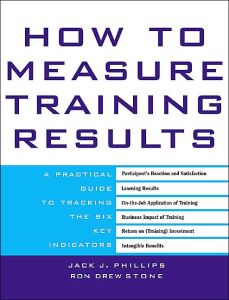Join getAbstract to access the summary!

Join getAbstract to access the summary!
Jack J. Phillips and Ron D. Stone
How to Measure Training Results
A Practical Guide to Tracking the Six Key Indicators
McGraw-Hill, 2002
What's inside?
To determine the real worth of your training program, here’s how to crunch the return on investment calculation.
Recommendation
Authors Jack J. Phillips and Ron Drew Stone have created an easy-to-understand method for measuring the real benefits of training. They outline a process you can use not only to understand the real impact of your training programs, but also to explain the benefits to top management in terms of actual dollars. Their guide takes you step-by-step through six levels of evaluation, from the early planning stages through implementation, right up to an impact study you can use on an ongoing basis to manage training evaluation. getAbstract thinks this guide offers very useful information for training managers. It provides concrete, step-by-step formulas and practical examples on how to set training goals, evaluate training at each level, convert training data to a compelling ROI model and measure the real benefits of your training programs.
Summary
About the Authors
Jack J. Phillips, Ph.D. is a training and performance measurement consultant. Ron Drew Stone directs the measurement and accountability practice at the Jack Phillips Center for Research.




















Comment on this summary